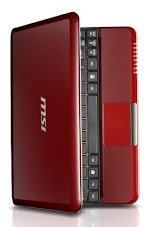MOUNTAIN VIEW, Calif.--Google's Andy Rubin, head of the company's Android development, would like to clear something up: Google is not in the phone-making business.

Don't expect to see Google-developed hardware competing with the Motorola Droid anytime soon.
(Credit: Motorola)Last week TheStreet.com reported that Google had plans to sell a Google-developed phone at retail this year, bypassing carriers with its own Android implementation. But Rubin, vice president of engineering for Android at Google, scoffed at the notion that the company would "compete with its customers" by releasing its own phone.
"We're not making hardware," Rubin said. "We're enabling other people to build hardware."
Now, Google has played a role in designing phones that have emerged with Android, such as the G1. For example, Google advocated the infamous hinge design on the G1 based on its desire to offer a phone with a five-row keyboard, Rubin said. That design was not popular with reviewers, however, and Rubin joked that perhaps that's why Google shouldn't make its own hardware.
But pushing for a design feature is a far cry from designing an entire phone, contracting with a manufacturing partner to build it, and working the distribution channels to get it to market. That would be "a fundamental shift" in Google's business model, Rubin said, and one the company does not seem prepared to make at this time.
Rumors of a so-called "Gphone" date back years, long before Google formally announced Android in November 2007. But Google's strategy to date has been a somewhat traditional volume licensing play, working with hardware and carrier partners to spread Android far and wide as the mobile operating system of choice, rather than following Apple's lead with a complete hardware and software design like the iPhone.
Almost two years later, the software is rounding into form with the release of several phones this year along with the pending release of the Motorola Droid, which runs Android 2.0 on Verizon's network.














































